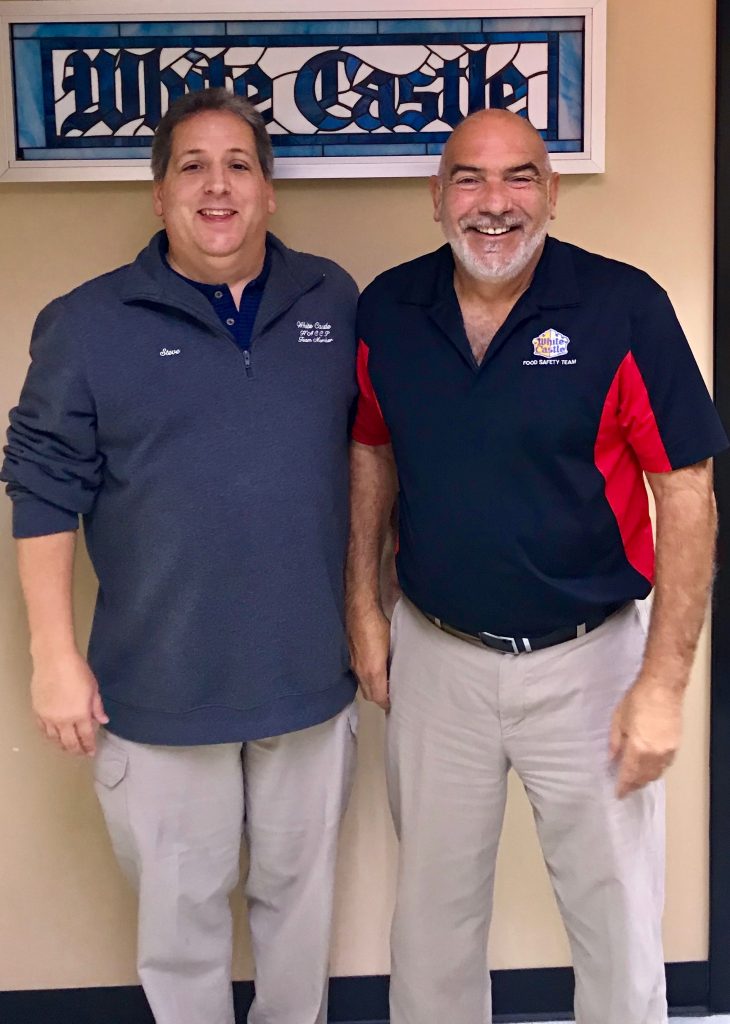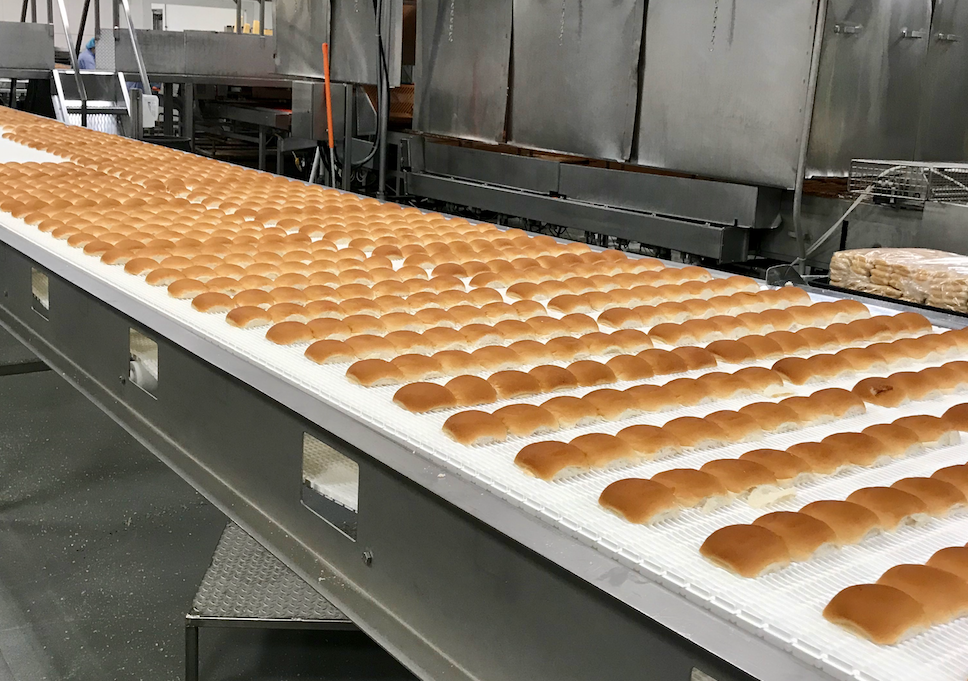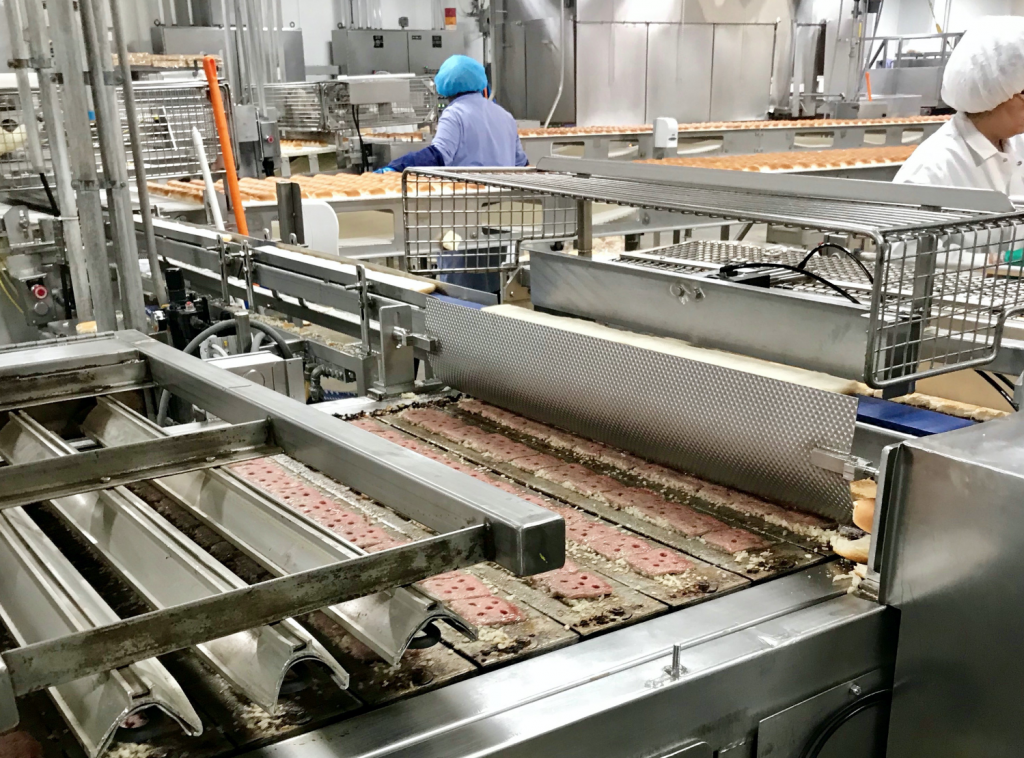White Castle’s Largest Frozen Food Facility Resides in Jeffersontown
Writer / Tyrel Kessinger
 White Castle has been serving their unique brand of burgers since 1921, when they opened their first restaurant in Wichita, Kansas. While the fast-food dynasty has come a long way since then, their proliferation has been contained within only a portion of the United States, which left a lot of unlucky people unable to enjoy one of the chain’s infamous “sliders.” That is, until 1988, when White Castle created their own frozen foods division, ushering them into a previously untapped market and bringing their delicious product to frozen food sections the nation over.
White Castle has been serving their unique brand of burgers since 1921, when they opened their first restaurant in Wichita, Kansas. While the fast-food dynasty has come a long way since then, their proliferation has been contained within only a portion of the United States, which left a lot of unlucky people unable to enjoy one of the chain’s infamous “sliders.” That is, until 1988, when White Castle created their own frozen foods division, ushering them into a previously untapped market and bringing their delicious product to frozen food sections the nation over.
Plant manager Tony McGraw oversees production at the Jeffersontown facility and is the resident “HR person who keeps the peace” within the factory.
“I started on Chamberlain Lane in ‘88, which is where the pilot plant was at, the test plant to see if they were going to go with the concept of frozen food,” he says.
He later served a stint at the White Castle meat plant in Orleans, Indiana, before returning to the Jeffersontown area in 1997, the year the company opened the facility in its current industrial park location. “Originally, it was for the tax incentive in Ruckriegel,” McGraw says of the company’s decision to build the plant in the Jeffersontown area. “To attract businesses whenever they were first developing the park. And this location is centrally located to all the major interstates in the country as well.”
“This plant is the biggest frozen food facility that White Castle has,” McGraw informs me. While the site is deceptively unassuming from the outside, a staggering amount of work takes place here.
“We have three production lines here. We have two older lines and we have one new automated production line,” McGraw says. “We basically run 48,000 burgers an hour, 16 hours a day. Five days a week, sometimes six.”
For those of you not up to the math, that comes out to an astronomical 200,000,000 to 240,000,000 burgers a year, depending on the amount of days worked. To say that’s a lot of beef is quite the understatement, but perhaps McGraw sums it much better: “This division is very successful.”
The Tour
Steve Haines, the facility’s Quality Assurance officer, and my guide through the plant’s processes, prepped me for the tour. It’s obvious by the gear I was asked to wear and the hygienic procedures I underwent before stepping out on the floor that, above all, White Castle’s two main ingredients are safety and cleanliness. Before the tour began, he asked whether I wanted the short version or the long. I opted for long, which obviously pleased the smiling Haines. “What can I say, I’m proud of what we do here,” he told me as he showed around the plant.
It’s conveyor belt system of making White Castle burgers, powered by both hardworking human hands and robotic automation working in conjunction, was a fascinating spectacle to witness. And while Haines knows the procedures forward and backwards, he took great pleasure in giving me the in-depth rundown of how the factory operated.
“We’re very proud our reputation and of being here in Jeffersontown,” he says.
Essentially, the plant “mimics the process the restaurants use” to make the burgers, only on an industrial-sized scale. As you might have guessed, it all begins with the meat, which is shipped in daily from White Castle’s Orleans plant. Both the meat, and cheese, arrive in frozen logs that are “sawed” to the proper size, and are delivered daily in “two, sometimes even three trucks a day,” Haines says. The other main ingredient, the onions, are sent dehydrated and then rehydrated before being diced by an industrial slicer and placed on the company’s signature buns, which are made at White Castle’s own bakeries. From there, the burgers make their way down a conveyor belt system, seasoned in a shower of salt and pepper, and topped with cheese before meeting back up with the top half of the bun, all the while being cooked.
“A lot of people think we’re just trying to cheat them by cutting holes in the meat,” Haines explains of the burger’s tell-tale design, “but it’s actually part of a process that allows us to efficiently cook the burgers. You know, at home, you’re flipping the burgers over, but we can’t do that here.”
After the burgers are reunited with top bun, they’re separated into pairs, bagged, flash-frozen and boxed. Each box is marked with the location and date of where and when they were made, then loaded into larger cases, palletized and shipped out nationwide to grocery stores near you.
While the White Castle frozen food plant may not appear to be a physically large facility, it does employ a healthy number of people.
“We have 210 employees and about 20 temporaries. We have our own sanitation department that comes in in the evening and four or five maintenance guys that work every night,” McGraw says.
Another great feature of the Jeffersontown facility, and the company, is its strong diversity among its employees.
“We definitely have a very diversified workforce,” McGraw says. “Our statement policy is written in nine languages.”
Like Haines, McGraw is proud of his job and his people. “We have a really good group of people here. We’re all like family,” he says.
For all this, the ability to enjoy a White Castle burger throughout the United States, we can thank a little-known man named Walt Anderson, as McGraw tells it. Apparently, the man was the direct inspiration for White Castle to start its own frozen food division.
“What happened was, there was a guy, Walt Anderson, that used to buy hamburgers and take them in a frozen truck to Florida where there weren’t any White Castles and sell them,” he says. “So, the company wondered, is this feasible?”
It didn’t take long for the company to realize it was and the rest, as they say, is history.
“We started out making a pallet a day,” McGraw says, referring to the Chamberlain test plant. “Now, we make 100 to 110 pallets a day.”
So, if you’ve ever enjoyed a frozen slider there’s a good chance it originated from the Jeffersontown plant.
“You can find them everywhere,” McGraw says. “Wal-Mart, Kroger, Aldi, Sav-A-Lot, the Dollar General Store, CVS, Walgreens. We take care of the whole United States.”
In other words, if you’re ever in the mood for a White Castle burger, no matter your location, you’re never very far away from one.








